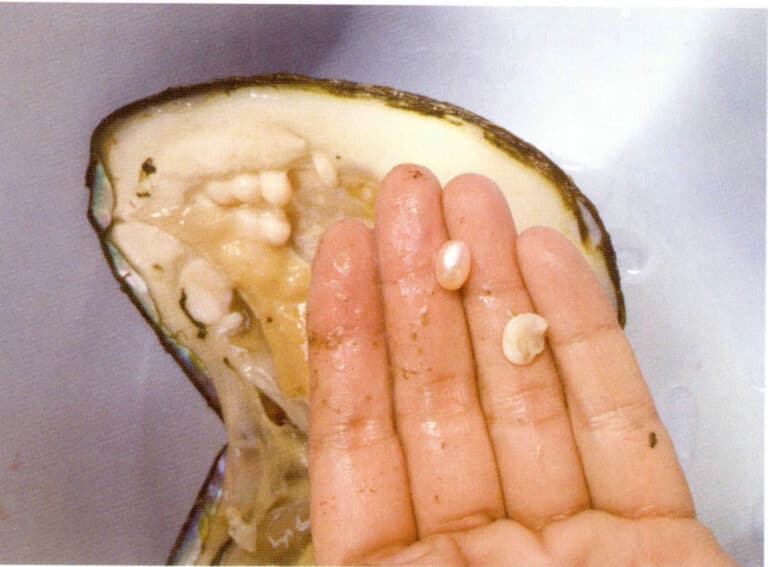Gemstone Secrets: Your Guide to Kyanite, Cordierite, and More
14 Kinds of Gems You Must Know
Johdanto:
In addition to precious and popular gemstones, if you want to learn about gemstones or enjoy the jade market There are also many common gemstones, each with its own charm, which you should know.
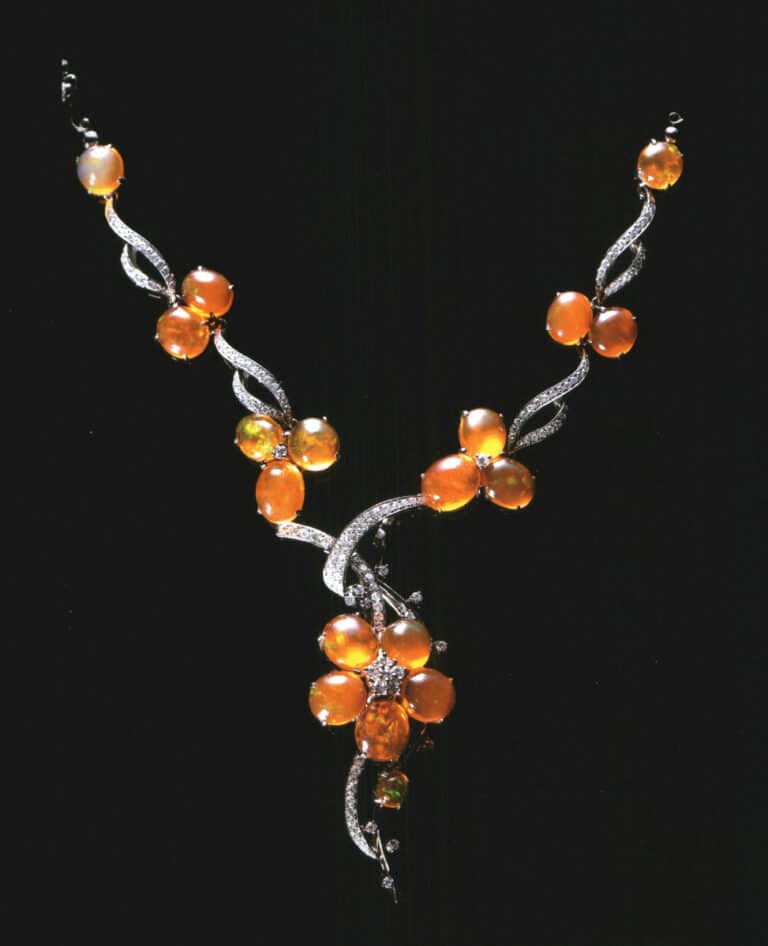
Sisällysluettelo
Section Ⅰ Kyanite
Kyanite has well-developed cleavage, and its color resembles Sri Lankan sapphires. Some carefully selected Kyanite may initially appear to be Sri Lankan sapphires. Still, its refractive index is lower than that of sapphires, which can be distinguished by friends trained in gemology upon careful observation. Most people who inquire about Kyanite use it for spiritual healing, and some collect it in large quantities, likely because it looks so much like Sri Lankan sapphires!
| Composition | Crystal system | Kovuus | Specific Gravity | Taitekerroin | Väri | Cleavage | Fracture |
|---|---|---|---|---|---|---|---|
| Al2SiO5 | Triclinic system | 4 ~ 7 | 3.62 | 1.716 ~ 1.731 | Blue or bluish-green | Perfect axial cleavage | - |
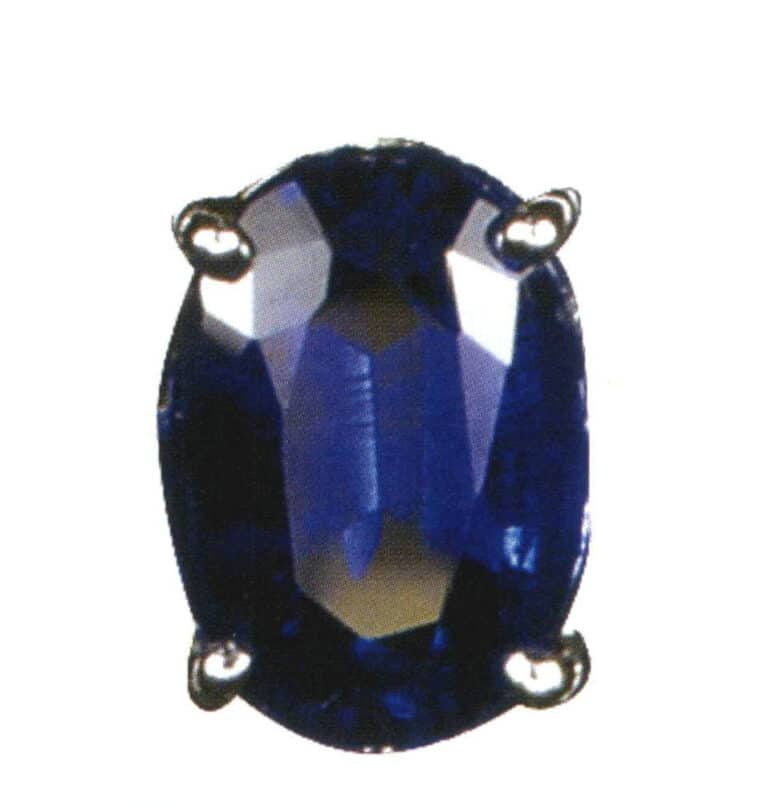
Kyanite is produced in Brazil, Myanmar, and Kenya. Lower quality Kyanites are mostly polished into cabochons; those with beautiful colors and few cleavages are mostly cut into oval shapes. Since 1997, common Kyanite s over 5 carats, with no cleavages and no color bands, are priced at US$31-46; for sizes between 1 to 5 carats, with clean colors, the price is US$15-31; if there are many inclusions, the price is US$3-9.
Kyanite is relatively soft, and its surface is easily scratched, so special care should be taken during setting, and it should not be directly electroplated to avoid damage.
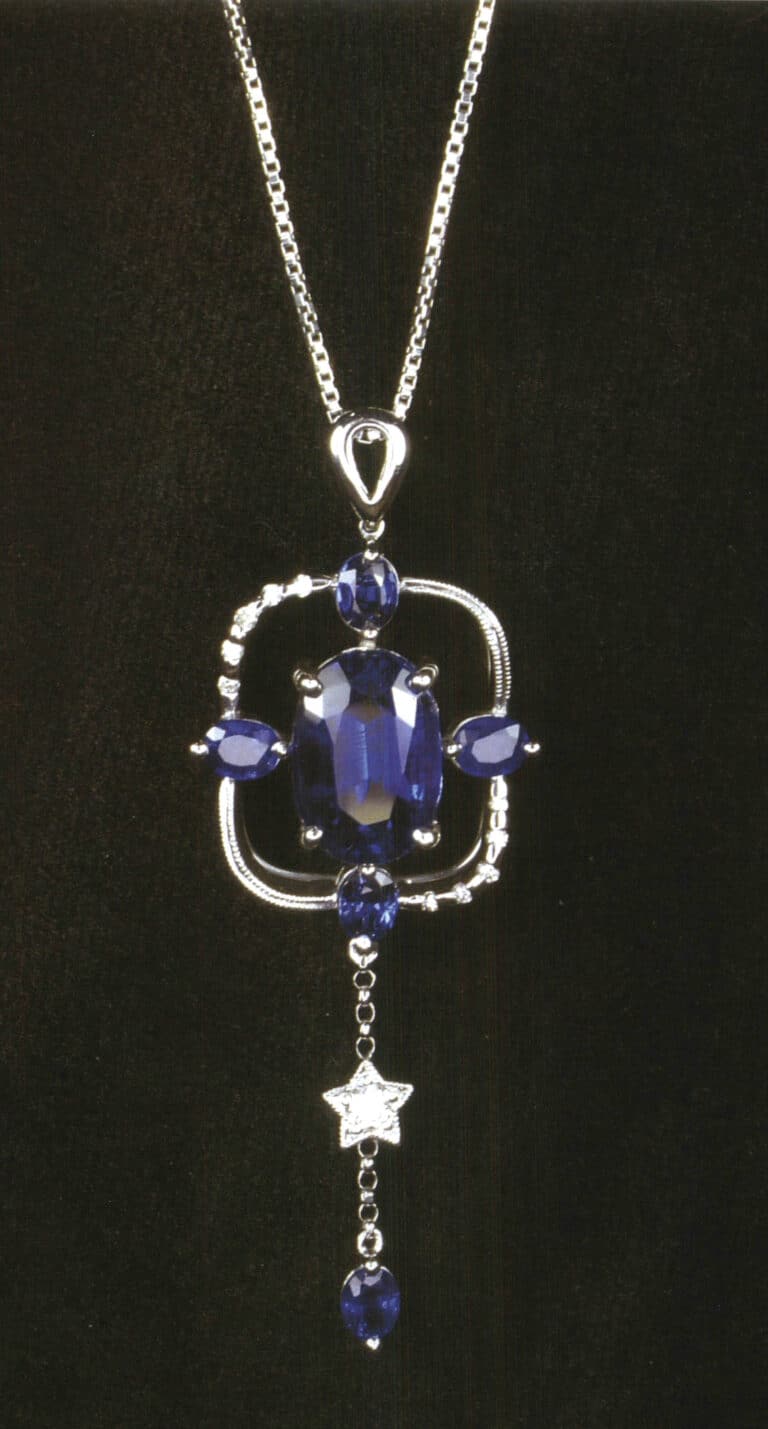
Section II Cordierite
Cordierite is named in honor of the French geologist P.L.A. Cordier (1777- 1861), and another name, iolite, comes from the Greek word for “violet.” When cut and polished, the violet-blue cordierite resembles sapphire and was mistakenly referred to as “water sapphire” in earlier times. The most significant feature of cordierite is its strong pleochroism; it appears colorless when viewed from one direction and blue when viewed from the side, leading some jewelers to call it a “two-color stone.”
| Composition | Crystal system | Kovuus | Specific Gravity | Taitekerroin | Väri | Cleavage | Fracture |
|---|---|---|---|---|---|---|---|
| Mg2Al3 (AlSisO18) | Orthorhombic | 6.5 ~ 7 | 2.60 | 1.54 ~ 1.55 | Blue, bluish-purple to blue-gray | Clear axial cleavage | Semi-shell-like |

Gem-quality cordierite is found in Sri Lanka, Madagascar, Tanzania, Myanmar, and Namibia.
Cordierite is easily confused with sapphire and amethyst. The refractive index of cordierite is lower than that of sapphire, and it often contains many inclusions, so it is mainly cut into cabochons. Cordierite is mostly around 1-15 carats, and the quality depends on the number of inclusions. Standard sizes are 1-5 carats; if there are few inclusions, it costs 1 carat US$15-25; those over 10 carats and clean are rare. With many inclusions, Cordierite costs US$6-12.
A popular form of spiritual therapy claims to transmit magical powers through cordierite to heal emotional wounds. Whether it is effective is subjective. However, it is recommended that if there are any physical issues, it is best to seek help from a doctor for proper treatment.
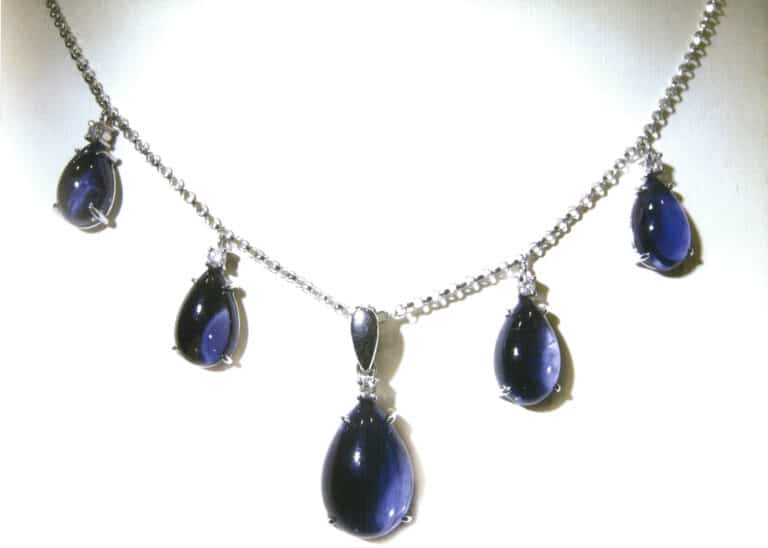
Section III Apatite
Apatite comes from the Greek word Apate, meaning “deceit,” mainly because when apatite was first discovered, its varieties were often confused with other minerals such as aquamarine, amethyst, or fluorite. Common colors include green (between olive green and dark green), blue-green, and blue, a representative mineral of Mohs hardness 5.
| Composition | Crystal system | Kovuus | Specific Gravity | Taitekerroin | Väri | Cleavage | Fracture |
|---|---|---|---|---|---|---|---|
| Ca5(PO4)3( F, Cl, OH) | Hexagonal crystal system | 5 (Can barely scrape out traces with a small knife) | 3.15 ~ 3.20 | 1.642 ~ 1.64 | Colorless, yellow, blue, purple, green, brown, white, etc. | Underdeveloped | Kuoren muotoinen |
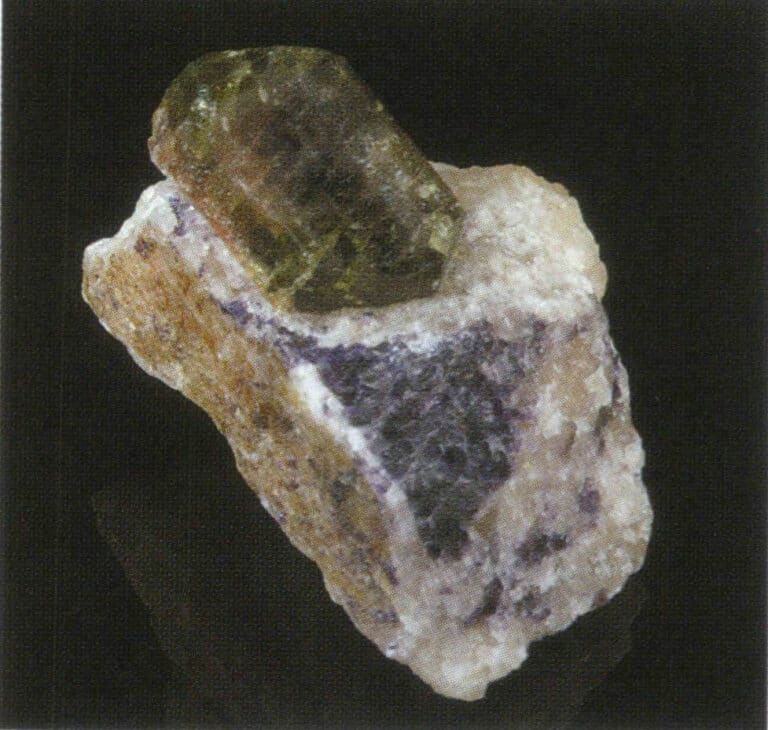
The apatite commonly seen on the market is blue and green, and those who generally buy apatite are looking for a specimen mineral with a Mohs hardness of 5. Apatite has various colors due to chlorine or fluorine in calcium phosphate. It can exhibit a strong, colorful luster if cut and polished properly. Blue and purple apatite are more precious than yellow and green apatite. Apatite cat’s eye was discovered in India, and this gemstone gradually appeared in the jewelry industry in large quantities.
Russia, Myanmar, and Sri Lanka are the world’s largest apatite deposits. The apatite produced in Sri Lanka is blue and has a fibrous structure, which can exhibit a cat’s eye effect when cut and polished in the correct direction. However, high-quality specimens are rare and often have many cracks. As for the yellow-brown apatite cat’s eye, some people use it to imitate the cat’s eye of jadeite, with a price difference of over a hundred times, so caution is advised.
The price is quite affordable whether the apatite is green, blue, or yellow-brown.

Section IV Serpentine
Serpentine refers to a green mineral variety with python skin patterns. It primarily comprises magnesium silicate hydrates, usually appearing green but can also be yellow-green or black. It often coexists with talc. Serpentine has long been used as a decorative item or building material, and the value of carved pieces is often higher than when used as gemstones.
| Composition | Crystal system | Kovuus | Specific Gravity | Taitekerroin | Väri | Cleavage | Fracture |
|---|---|---|---|---|---|---|---|
| Mg3Si2O5(VOI)4 | Monoclinic system | 5 ~ 5.5 | 2.6 ~ 2.8 | 1.55 ~ 1.56 | Variable, often ranging from light green to dark | - | Kuoren muotoinen |
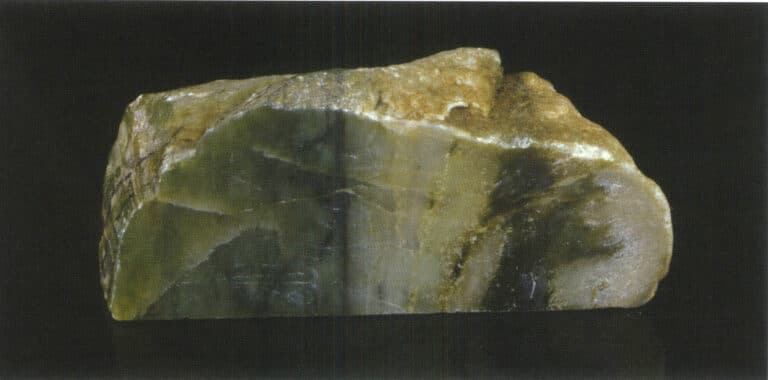
The luminous cup is made of serpentine, and because the cup is cut and polished very thin, it can be seen through in the moonlight, with a hint of yellow-green. It has always been the best souvenir tourists bring to the mainland. A set of tea pots and tea cups sells for about US$93. This serpentine type is called ” Hsiuyen jade” in mainland China and is produced in the Qilian Mountains of Gansu, with high transparency and a dark green color.
Early imitation jade was all carved from serpentine. In the jade market, you can see piles of small pendants or jade pieces selling for US$1.5-3, most of which are made of serpentine. Serpentine products can be very large, and on the mainland, they are used as large sculptures, and intricate carvings are done on them.
Some vendors are now importing transparent, yellow-green serpentine, polished into cabochons to be sold as Prehnite. Regardless of weight, whether made into pendants or rings, they generally sell for US$31-62. When purchasing, be careful to distinguish and ask the seller whether it is Prehnite or jade that resembles Prehnite.
The production and uses of China Taiwan serpentine
Serpentine is mainly found in metamorphic rocks, and its production is very abundant in eastern China Taiwan. According to reports, in 1998, China Taiwan produced 21,532 tons of serpentine (raw material) with a market value of 11,455,000 New China Taiwan dollars; 7,564 tons of serpentine (stone) with a market value of US$351622, primarily for export, making it one of China Taiwan’s major export minerals in recent years. Besides its use as a gemstone, serpentine can also be made into sculptures, building wall tiles (exterior walls), refractory materials, and can be processed to extra China Taiwan jade ct magnesium for fertilizers and steelmaking. The exterior wall of the Taipei City Public Building once used imported serpentine, but due to Taipei’s humid and rainy climate, the iron in the serpentine oxidized, causing reddish-brown stains on the wall. If domestic serpentine had been chosen initially, this problem might not have occurred.
It is not easy to distinguish between serpentine and amphibole jade products (even for geology students), but one can use a specific gravity liquid called bromoform to differentiate them. Amphibole jade will sink in bromoform with a specific gravity of 2.9, while serpentine will float on top. Additionally, a steel knife with a hardness of 6 can scratch the surface of serpentine, but it cannot leave a mark on amphibole jade.
How to distinguish between serpentine and China Taiwan’s jade in the wild?
Every time along the valley of the mine, we can see various sizes of green minerals. Many green minerals can also be found in the jade mining pits. How can we tell which ones are serpentine and which are China Taiwan’s jade? How can we distinguish the differences between the two in the wild?
China Taiwan’s jade is mostly transparent and emerald green when illuminated, while serpentine is opaque, and there are slight differences in their colors; serpentine usually leans towards a darker green and often coexists with asbestos fibers. The biggest difference between China Taiwan’s jade and serpentine is whether they are translucent.

Section V Rhodochrosite
Rhodochrosite is an extremely rare manganese carbonate mineral, usually exhibiting a rose color that is lighter than that of rhodonite (see the “China Taiwan Special Products” chapter), and it has similarities in stripes to Malachite. The name rhodochrosite comes from two Greek words meaning “rose” and “color,” referring to its rose-like hue. The main production areas are mostly in the Americas, including Argentina, Peru, the United States, and South Africa.
| Composition | Crystal system | Kovuus | Specific Gravity | Taitekerroin | Väri | Cleavage | Fracture |
|---|---|---|---|---|---|---|---|
| MnCO3 | Hexagonal crystal system | 3.5 ~ 4 | 3.5 ~ 3.7 | 1.58 ~ 1.84 | Rose red, light pink to dark brown | Perfect rhombohedral cleavage | Uneven shape |
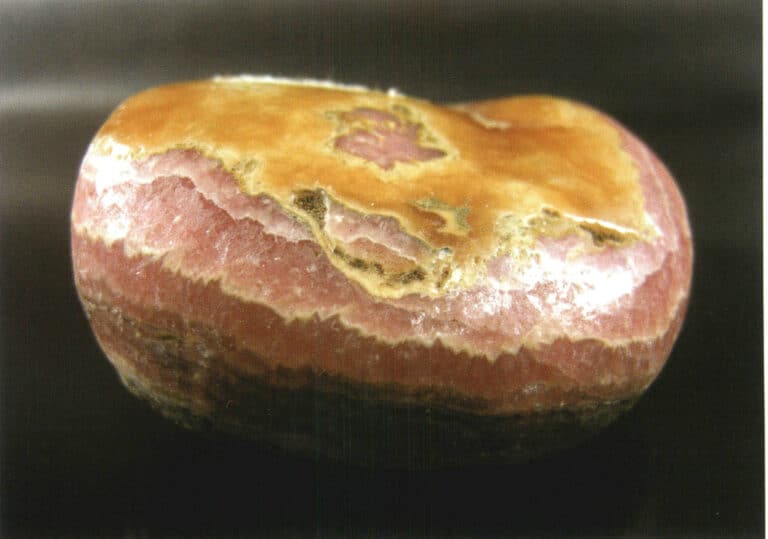
Pink rhodochrosite is quite popular, with a surface with concentric agate-like patterns; some may have white streaks. In recent years, rhodochrosite with different shades of pink banding has become a very important decorative stone, and due to its vibrant colors, it is often used to make necklaces and brooches and is also used in bathroom fixtures.
The price of rhodochrosite is not high; you can buy a cabochon for US$ 9-15 online or at a jade market. In recent years, Chinese merchants have gradually imported it, mostly to be set in silver.
High-quality rhodochrosite has no patterns, is a powdery rose color, and is commercially named “rhodochrosite.” A piece can be bought for US$31-62.The gemstone most easily confused with rhodochrosite is rhodonite; their compositions differ. Rhodochrosite is manganese carbonate, and rhodonite (rose stone) is manganese silicate. You can easily distinguish them with a nail; rhodochrosite is softer and can be scratched by a nail, but rhodonite cannot. At the Hong Kong Jewelry Fair in September 2000, several booths showcased Argentine rhodochrosite, which is semi-transparent light pink and sometimes has concentric circular stripes, ideal for polishing into cabochon shapes for pendants, rings, brooches, and bracelets.
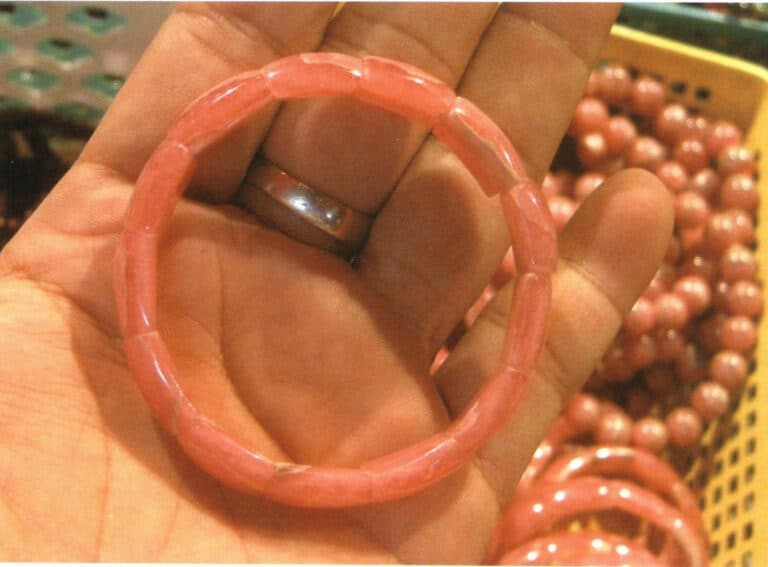
Section VI Sugilite
Sugilite suddenly became a rising star after 2006, but due to its high price, after a brief period of popularity, interest gradually declined with the onset of the financial crisis.
| Composition | Crystal system | Kovuus | Specific Gravity | Taitekerroin | Väri | Cleavage | Fracture |
|---|---|---|---|---|---|---|---|
| (K’Na) (Na"Fe)2 (Li,Fe) Si12O30 | Orthorhombic | 6 ~ 6.5 | 3.12 | 1.55 ~ 1.56 | Red-purple, blue-purple | - | Uneven |

Sugilite round drop pendant

Sugilite beads spring bracelet
In 1994, Japanese petroleum exploration scientist and rock mineralogist Ken-ichi Sugi first discovered Sugilite, which was named in his honor. Sugilite is produced in very small quantities, has vibrant colors, and features varying shades of grape purple. Initially found in Brazil, it has also been discovered in Africa. However, consumers drawn to it are not necessarily attracted to its beauty but believe in its healing properties.
Practitioners claim that Sugilite can open and guide the seven chakras of the human body, activate spirituality, purify all negative energies in the chakras, soothe negative emotions such as anger, depression, frustration, and sadness, restore balance, enhance psychic abilities, and develop wisdom, making interpersonal interactions more harmonious, expanding interpersonal relationships. Speaking of which, even I am a bit tempted. Nowadays, many color theory experts are promoting the idea of wearing different colors at different times, just like how our eyes need to see more green plants or distant mountains when tired; there is a similar principle. Indeed, purple gemstones can improve one’s mood just by looking at them, but the efficacy of other claims remains debatable.
Due to the mysterious color of the Sugilite stone and the vigorous promotion by Chinese merchants, this previously obscure mineral became famous overnight, and its price soared. The original ore from Africa has been rising continuously; a purple bracelet that used to cost a few thousand New China Taiwan dollars ten years ago now can be priced at US$625-938 and may not even be available. It is one of the most expensive gemstones among those claiming to have therapeutic effects.
Additionally, there is a mineral called charoite, composed of purple silicate calcium stone with a radiating fibrous appearance, mainly produced in the mountainous areas of the Sakha Republic in Russia. It appeared on the market in 1995, and initially, everyone needed clarification about the difference between this mineral and Sugilite. The price of a purple dragon crystal bracelet varies based on the depth of the purple color and whether there are black spots inside; a high-quality one sells for US$156-187, while an average-quality one is about US$93-109.

charoite
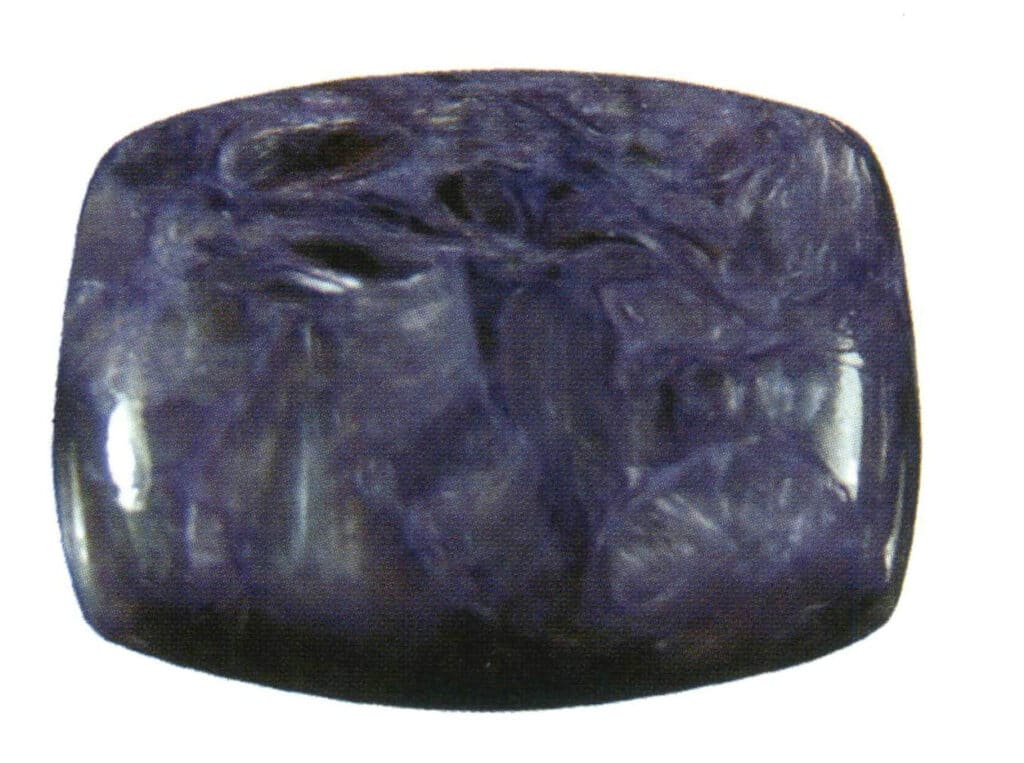
charoite
Section VII Tibet Beads
Tibet Beads is a mysterious gem endowed with religious power, originating from Tibet. It is said that lamas wearing Tibet Beads, through the blessings of their practice, are filled with energy; thus, consumers who wear them can change their magnetic field, bringing health and wealth. Due to the vigorous marketing by businesses, Tibet Beads has become a trendy gem in recent years. Which region first sparked the craze for Tibet Beads? The answer is China Taiwan, where we are located. However, it is more challenging than climbing the sky for consumers to purchase a genuine bead.
| Composition | Crystal system | Kovuus | Specific Gravity | Taitekerroin | Väri | Cleavage | Fracture |
|---|---|---|---|---|---|---|---|
| SiO2 | Hexagonal crystal system | 7 | 2.65 | 1.544 ~ 1.553 | Dyed black | Bad | Kuoren muotoinen |
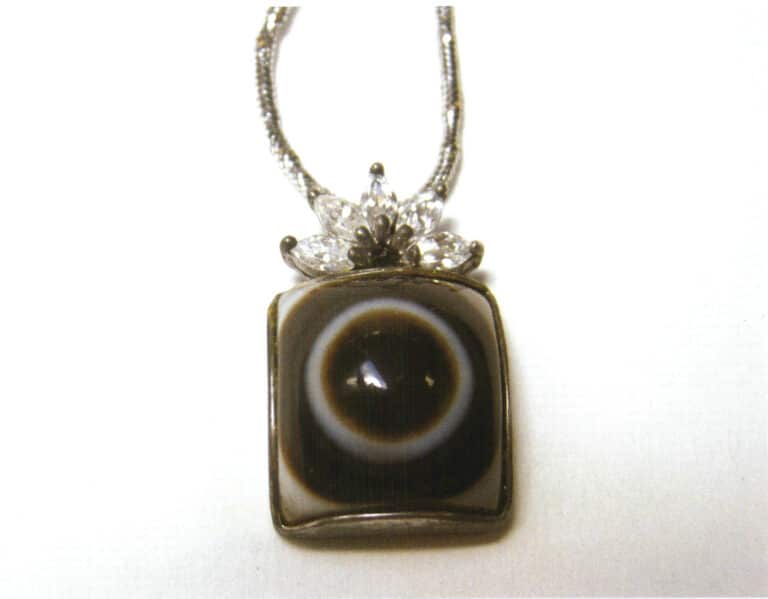
Tibet Beads is agate, hand-painted with Buddhist totems, and heat-treated. Many China Taiwan business people have set up factories in mainland China, importing gray-white agate from Brazil, which is then cut into materials that can be used for Tibet Beads; workers then carve the patterns on Tibet Beads using craft knives, soaking in chemical agents. After soaking in chemical agents, Agate must be heated at high temperatures to change color. When subjected to high temperatures, the dye turns the originally gray-white agate black, while the lines scratched with a blade remain white, thus completing the Tibet Beads.

Tibet Beads bracelet
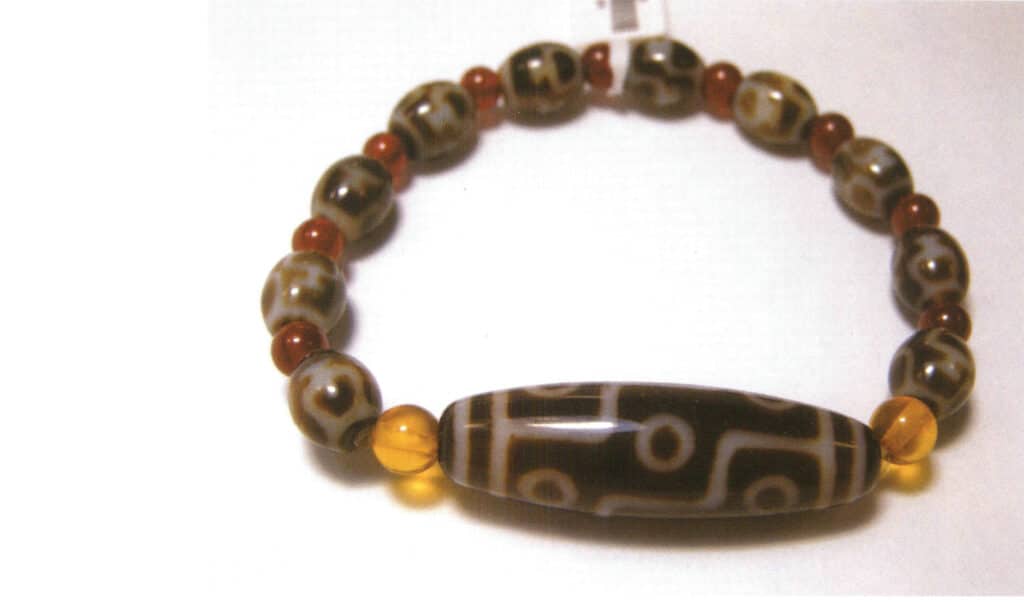
Tibet Beads bracelet
Chinese merchants are artistic and create many types of Tibet Beads, each with various totems and effects. Therefore, when purchasing Tibet Beads, I suggest appreciating and wearing them as agate art pieces from an artistic perspective. As for the effects claimed by some sellers, they are difficult to verify scientifically, so they only spend a little money and get deceived.
In China Taiwan, Tibet Beads are very popular, and even Tibetan lamas come to China Taiwan to buy Tibet Beads to sell back in Tibet. So when believers travel thousands of miles to buy Tibet Beads in Tibet, they might purchase ones from their hometown! However, although the wholesale volume in China Taiwan is large, the processing factories are in Guangzhou. We often refer to them as “Tibetan Tibet Beads,” but rather than calling them Tibetan Tibet Beads, it might be more accurate to call them Chinese Tibet Beads or Guangzhou Tibet Beads! The materials for Tibet Beads come from Brazil; it would be pretty accurate if we call them Brazilian Tibet Beads. Still, it is likely that the “magical power” would lose a significant portion, and no seller would tell consumers this.
Most jewelry appraisal institutions in China Taiwan can only identify the composition of Tibet Beads and cannot confirm whether they are genuine Tibet Beads. However, modern processed Tibet Beads are easy to locate at a glance. For example, some sellers claim that the cracks and missing corners of Tibet Beads are evidence of their age, but they are caused by striking during agate production. If consumers like Tibet Beads and believe that the totems on them can bring peace of mind, then spending a few hundred New China Taiwan dollars to buy a Tibet Bead to wear is also not bad; as the saying goes, sincerity brings results!
The craze for Tibet Beads in China Taiwan has gradually diminished with the onset of the financial crisis. The annual revenue from Tibet Beads in China Taiwan is estimated to be several billion dollars. During good economic times, chain Tibet Beads stores can be seen everywhere in China Taiwan, and television shopping channels have daily sales of Tibet Beads. With the endorsement of many celebrities and influential figures, many people have also joined the rush to buy Tibet Beads. However, during economic downturns, people’s wallets shrink, and with issues affording three meals a day, who has spare money to buy Tibet Beads? Thus, the craze faded overnight.
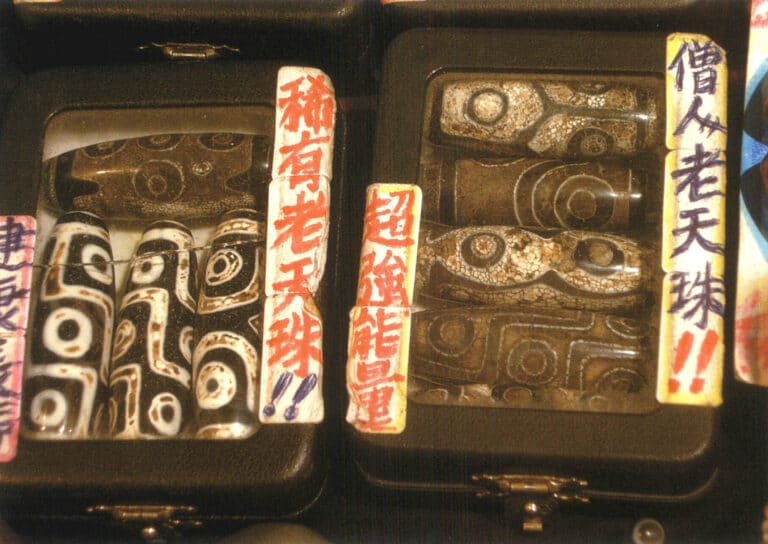
Section VIII Malachite
Circular patterns, usually found in areas with copper ore. The largest production area is currently in Saï, Africa. In recent years, malachite has been less commonly seen on the island, but it was pretty standard in the past. The copper dust generated during processing can cause illness, so it is less imported.
| Composition | Crystal system | Kovuus | Specific Gravity | Taitekerroin | Väri | Cleavage | Fracture |
|---|---|---|---|---|---|---|---|
| CU2CO3(VOI)2 | Monoclinic system | 3.5 ~ 4 | 3.8 | 1.85 (average) | Freshly earned green (Often vague) | Complete(usually vague) | Shell-shaped to unevenly shaped |
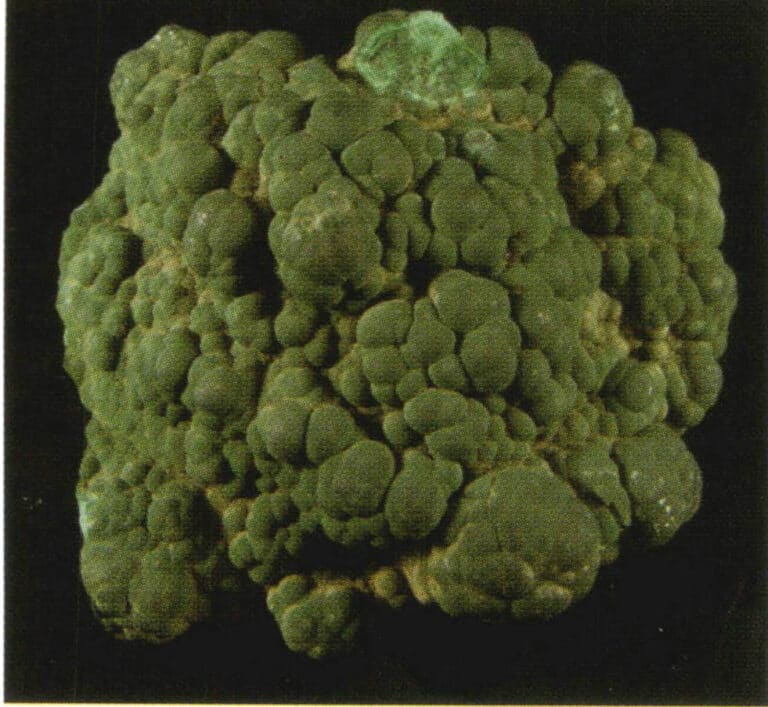
The crystals of malachite are elongated and columnar, tightly packed together, creating grape-like and concentric circular streaks. We can easily distinguish malachite from other minerals by the different shades of green in its streaks. Although the color of malachite is vibrant, it is not hard enough to maintain its polish for long, making it generally unsuitable for rings; it is often used for beads or brooches.
Malachite price is low; it is priced by the gram. In the jade market, a ball-shaped malachite the size of a thrush egg costs US$9-15. When wearing, be careful that the jewelry does not come into direct contact with the skin. If handled, it is best to wash hands before eating. Regular maintenance can be done by wiping it with clean water; if it loses its luster, it can be polished again to restore its charming appearance.
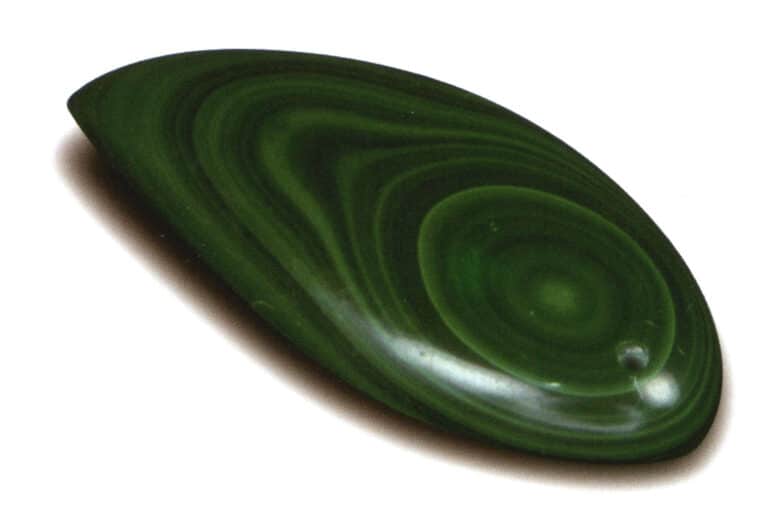
Copywrite @ Sobling.Jewelry - Custom korujen valmistaja, OEM ja ODM korut tehdas
Section IX Turquoise
Turquoise is also known as Turkish jade, Turquoise is produced in Iran and is processed before arriving in China via Turkey, which is why it is mistakenly believed to be of Turkish origin, hence the name. Additionally, both the United States and Tibet produce turmeric.
| Composition | Crystal system | Kovuus | Specific Gravity | Taitekerroin | Väri | Cleavage | Fracture |
|---|---|---|---|---|---|---|---|
| CuAl6(PO4)4(VOI)8• 5H2O | Triclinic system | 5 ~ 6 | 2.4- ~ 2.84 | 1.61 ~ 1.65 | Variable, often Blue to blue-green | - | Shell-shaped, granular |
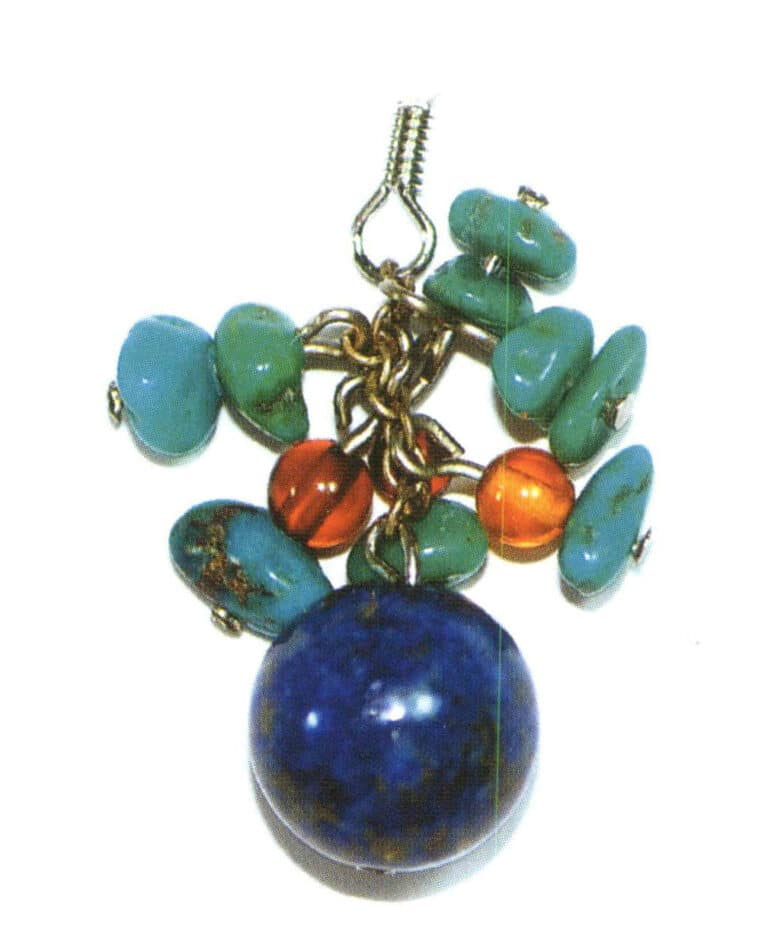
Many counterfeit turquoise on the market, and consumers must be cautious when purchasing it. Fake Turquoise is usually made of enamel, glass, china, agate, etc.; imitation techniques are becoming increasingly sophisticated, and even spider web patterns can be faked on the surface. Many jewelry stores near Taipei’s central train station sell them. A few years ago, I bought a bag of Turquoise in Thailand, and upon returning, I found that the internal and external colors were different; it turned out to be dyed agate, and the imitation was incredibly realistic!
Turquoise, similar to lapis lazuli, is not expensive and is usually made into beads and necklaces. A bracelet or necklace typically costs tens to hundreds of dollars. There are also famous foreign jewelry brands that use Turquoise as the main stone, embracing a retro style that pairs well with Chinese-style Tang suits. Additionally, a reminder: Turquoise is sensitive to heat, quickly dehydrates, and can fade when exposed to fire; in severe cases, it may even crack.

Section X Lapis-Lazuli
Lapis-Lazuli comes from Latin, where Lapis means stone and Lazuli means blue, referring to a blue stone. Lapis lazuli comprises blue lapis lazuli, blue calcite, and moellerite and is generally referred to as lapis Lazuli. In ancient Greece and Rome, it was ground into a precious blue pigment, and in mainland China, it was mainly ground into cosmetics for eyebrow painting; it is also commonly used in silver jewelry inlays and carvings. Many products made of lapis Lazuli can be found in markets in Tibet and Nepal. Lapis lazuli is a popular gemstone in Europe, often used for cufflinks, pens, and other accessories in Germany.
Because lapis lazuli contains pyrite, it can produce patterns. Some people prefer patterned ones, while others prefer clean ones, so you can choose according to personal preference.
| Composition | Crystal system | Kovuus | Specific Gravity | Taitekerroin | Väri | Cleavage | Fracture |
|---|---|---|---|---|---|---|---|
| 3NAAISIO4.NAS | Isometrinen kristallijärjestelmä | 5 ~ 6 | 2.5 ~ 3.0 | 1.50 | Often appears blue | - | Granular |
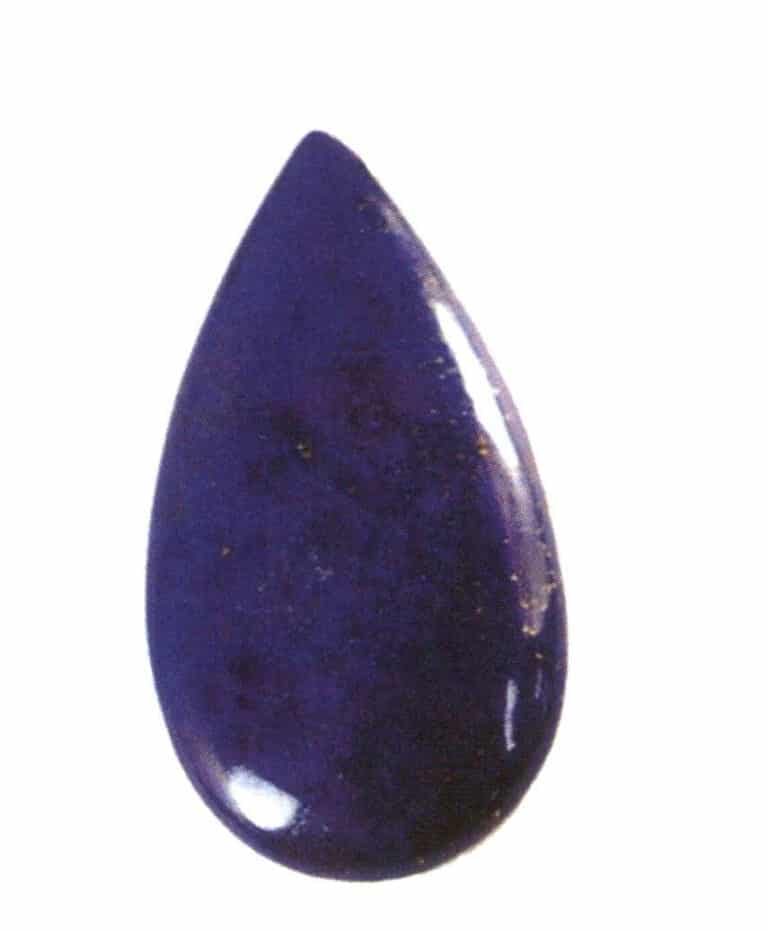
Lapis-Lazuli comes from Latin, where Lapis means stone and Lazuli means blue, referring to a blue stone. Lapis lazuli comprises blue lapis lazuli, blue calcite, and moellerite and is generally referred to as lapis Lazuli. In ancient Greece and Rome, it was ground into a precious blue pigment, and in mainland China, it was mainly ground into cosmetics for eyebrow painting; it is also commonly used in silver jewelry inlays and carvings. Many products made of lapis Lazuli can be found in markets in Tibet and Nepal. Lapis lazuli is a popular gemstone in Europe, often used for cufflinks, pens, and other accessories in Germany.
Because lapis lazuli contains pyrite, it can produce patterns. Some people prefer patterned ones, while others prefer clean ones, so you can choose according to personal preference.The finest lapis lazuli comes from Afghanistan; Myanmar, Angola, Pakistan, Chile, and Canada also produce it. There are also many counterfeit lapis lazuli products in the market. It will likely be counterfeit if consumers see a complete string of lapis lazuli products without impurities and of the same color. The price of lapis lazuli rings varies from A few dollars to tens of dollars depending on size, while a silver ring face made from it costs about a few tens of dollars. I once bought some small animal carvings made of lapis lazuli at a jewelry exhibition in Hong Kong, each costing several hundred New China Taiwan dollars.
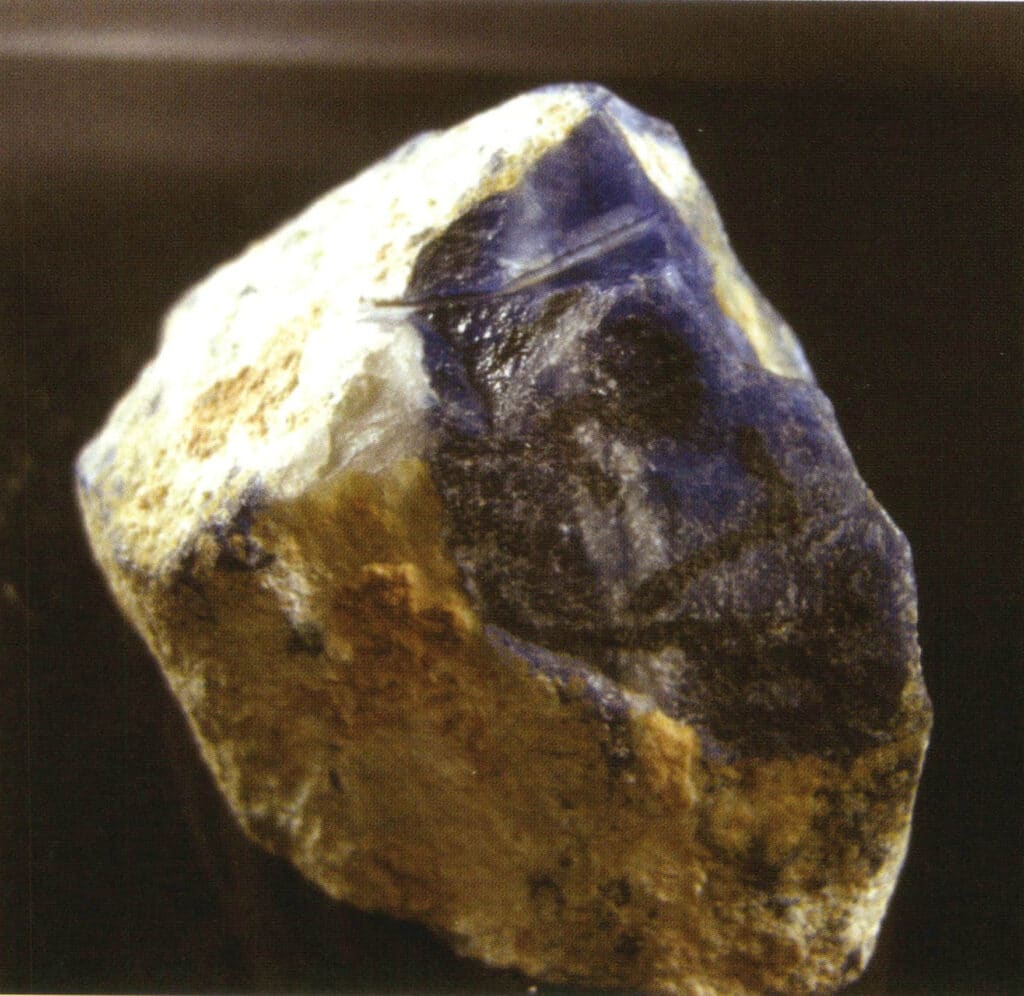
Siderite often has white minerals co-occurring with it
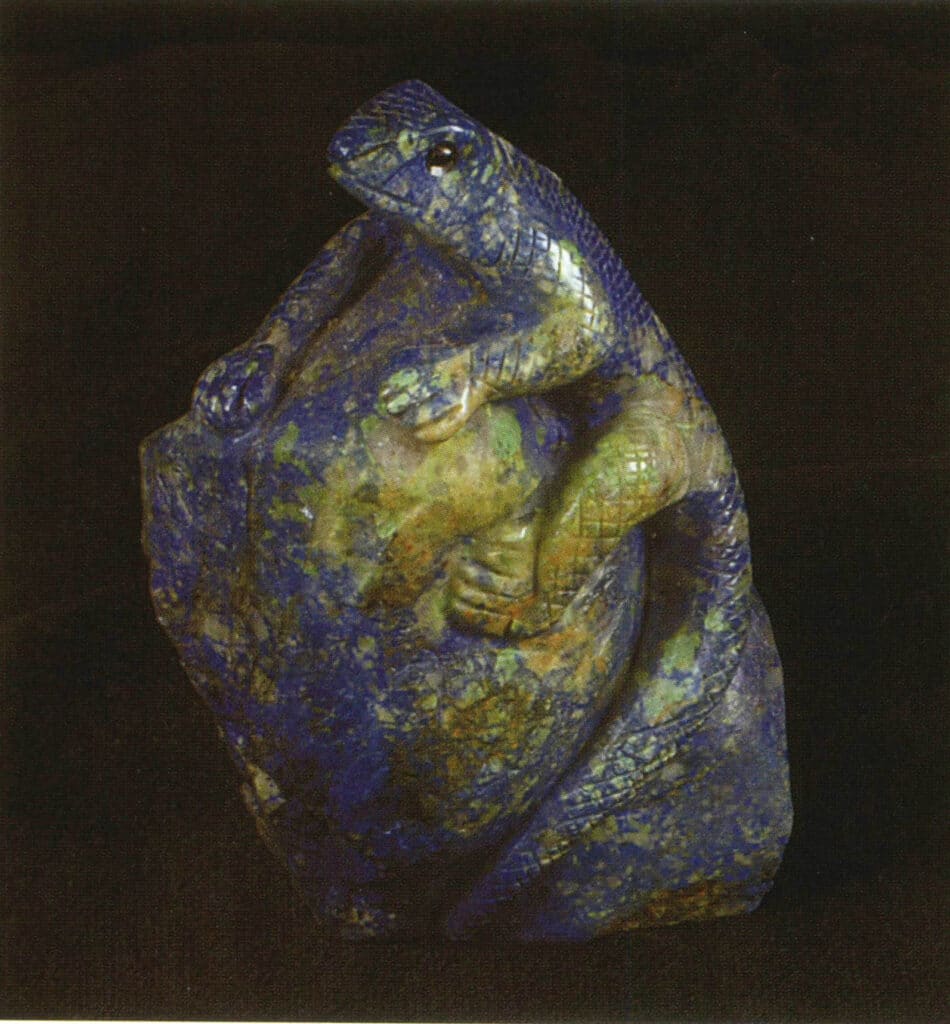
Lapis lazuli lizard carving with special charm
The mineral often confused with lapis lazuli is sodalite. The most significant difference between the two is that sodalite usually has white minerals coexisting and does not contain pyrite. Sodalite is often used for carving and sometimes ground into seals, with a pair of seals costing US$6-9.

Section XI Fluorite
Fluorite is named for its fluorescent reaction under fluorescent lights. China Taiwan does not produce fluorite, which is mainly imported from Hunan. In the past, fluorite vases could often be seen in Hualian, available in yellow, purple, and green, but they can only hold dried flowers. They cannot hold water because their hardness is only 4, making them easy to break.
| Composition | Crystal system | Kovuus | Specific Gravity | Taitekerroin | Väri | Cleavage | Fracture |
|---|---|---|---|---|---|---|---|
| CaF2 | Isometrinen kristallijärjestelmä | 4 | 3.18 | 1.43 | There are many varieties, but most are light green, blue, purple, and yellow. | Perfect octahedral cleavage, | Shell-like |

The natural fluorite crystal is octahedral, resembling cute little pyramids. Fluorite is very soft and can be carved into various shapes and made into a ring face. The price will be reasonable (basically, soft gemstones are not too expensive), and 1 carat can be bought for US$6-9 Color-changing fluorite can also be seen in online auctions; interested readers can search online.
Additionally, common fluorite is polished into spherical shapes and exhibits fluorescence at night, known as ” a legendary luminous pearl, A legendary luminous pearl the size of an egg costs US$9-15. Many claim to own a night pearl as tall as a person, which could break world records, but most are artificially phosphorescent, creating a glowing effect.
To qualify as a legendary luminous pearl, it should be:
First, a natural mineral;
Second, without artificial polishing or grinding processes, the shape is round or oval;
Third, it can glow continuously in a dark room.
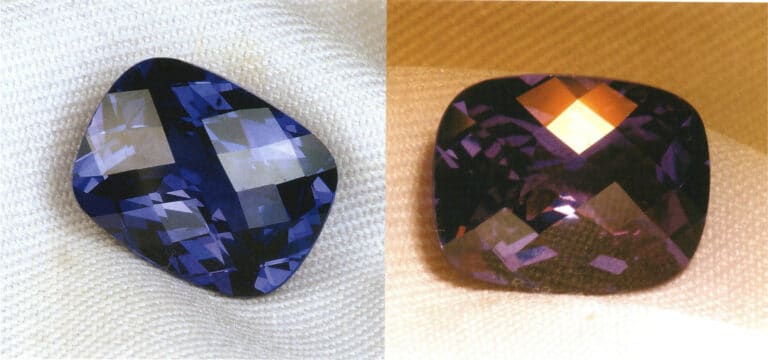
Section XII Sphalerite
Sphalerite comes from the Greek word “deceit” because people often confuse sphalerite with galena. Sphalerite is an ore mineral of zinc, primarily composed of zinc sulfide (ZnS), with well-formed tetrahedral crystals. The main production areas are in Mexico and Spain.
| Composition | Crystal system | Kovuus | Specific Gravity | Taitekerroin | Väri | Cleavage | Fracture |
|---|---|---|---|---|---|---|---|
| (Zn, Fe)S | Isometrinen kristallijärjestelmä | 3.5 ~ 4 | 4.05 | 2.37 | Golden yellow, orange yellow, brown | Perfectly rhombohedral twelve-faced | Kuoren muotoinen |
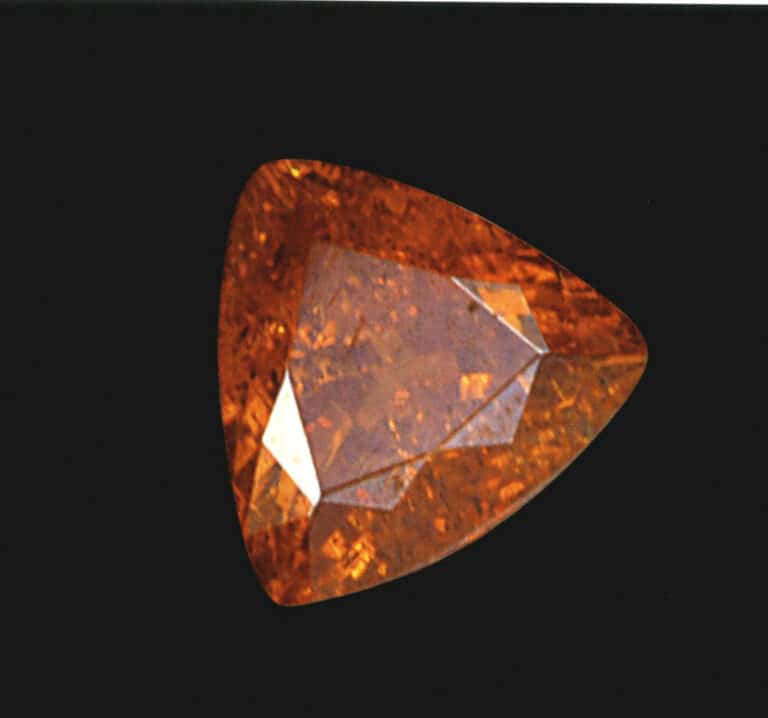
Sphalerite is soft and has perfect cleavage, making it quite difficult to polish into a gemstone, and it is one of the gems collected by experts. In 1997, I saw sphalerite in Bangkok, with fiery colors that were quite dazzling, and its strong adamantine luster immediately attracted me.
Sphalerite mostly contains impurities, and clean specimens are quite rare. The most common is 1-5 carats, and those over 10 are extremely rare. Sphalerite under 5 carats has a market price of 1 carat US$31-46; for those over 10 carats, 1 carat is US$93-109.
Section XIII Andalusite
Andalusite is named after the region where it was first discovered-Andalusia in Spain. It is in Spain, Austria, Brazil, Sri Lanka, and Australia.
| Composition | Crystal system | Kovuus | Specific Gravity | Taitekerroin | Väri | Cleavage | Fracture |
|---|---|---|---|---|---|---|---|
| Al2SiO5 | Orthorhombic | 7 ~ 7.5 | 3.16 ~ 3.20 | 1.63 ~ 1.64 | Flesh red, reddish-brown, and olive green | Clear columnar cleavage | Irregular shape |
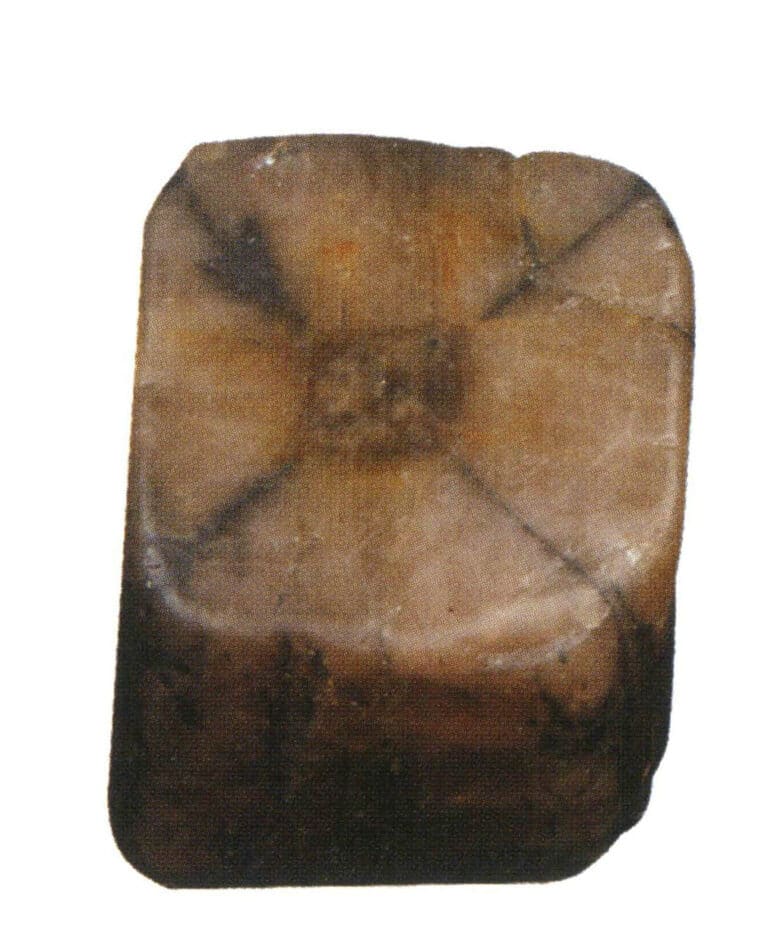
Andalusite has gem-quality hardness, color, and transparency; however, perhaps due to its lower brightness, it has never become a famous gemstone. Additionally, rhodolite exhibits strong and unique pleochroism, showing red, yellow, and green colors when the crystal is rotated, with different colors appearing depending on the origin. When rhodolite crystals display a natural “black cross” pattern on their square cross-section, they are called “black cross gemstones.” Black cross gemstones are precious stones that many Christians regard as talismans, and they are scientifically known as “chiastolite.”
Based on my experience of over ten years buying gemstones, I have only seen a few Andalusite, most of which have inclusions. The clean Andalusite I have seen is about 4 carats, with a market price of US$62-78, considered a gemstone for expert collectors. Additionally, I want to remind readers not to confuse Andalusite with red beryl; Andalusite is not a red beryl, and the two components are not the same and belong to different families.
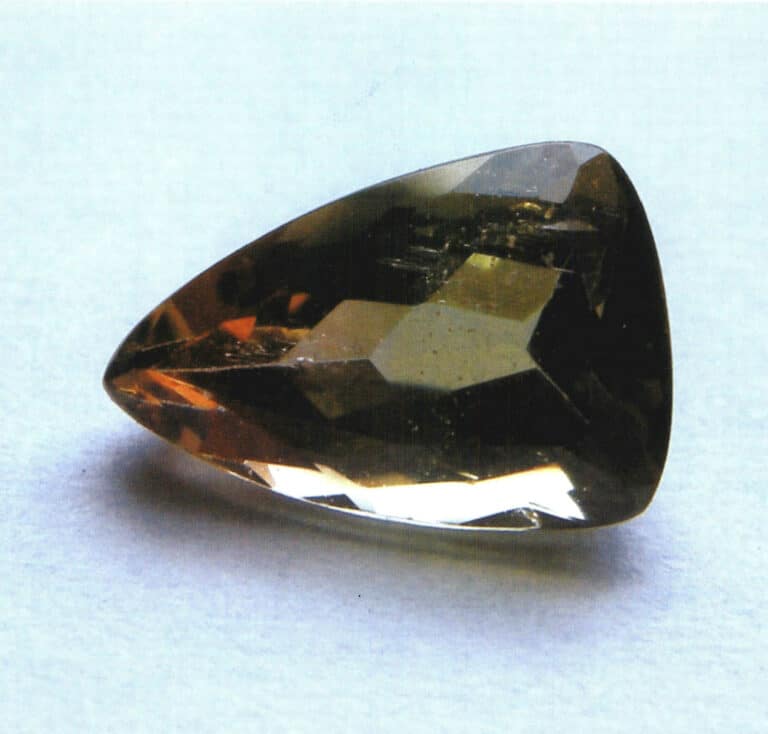
Section XIV Diopside
The term diopside comes from two Greek words meaning “double” and “appearance,” referring to the appearance of its vertical prismatic crystals that seem to have two directional arrangements. Diopside belongs to the pyroxene mineral group, with colors ranging from white to green. Additionally, diopside may sometimes contain chromium or manganese, resulting in chromium green or purple-blue crystals, or may have some fibrous characteristics, which can create a cat’s eye effect when cut and polished into a cabochon.
| Composition | Crystal system | Kovuus | Specific Gravity | Taitekerroin | Väri | Cleavage | Fracture |
|---|---|---|---|---|---|---|---|
| CaMgSi2O6 | Monoclinic system | 5 ~ 6 | 3.2 ~ 3.3 | 1.66 ~ 1.72 | White to light green, the color deepens with the content of Fe. | Completely columnar. | Irregular to shell-like. |
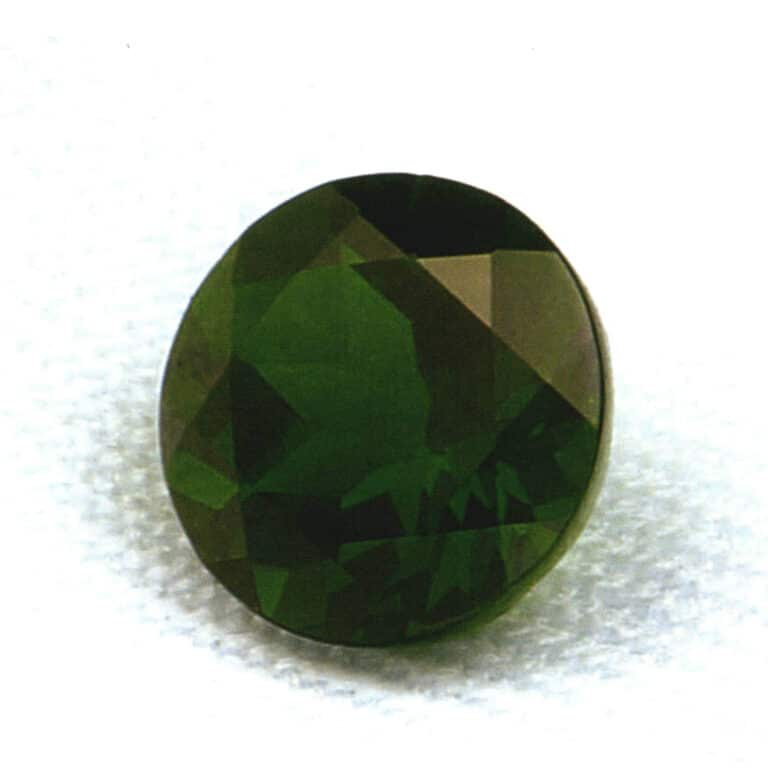
Gem-quality chrome diopside is produced in Siberia, while Myanmar produces beautiful chrome diopside and cat’s eye diopside. Green diopside is found in Sri Lanka, and Starlight diopside is produced in India. Other sources include the Ural Mountains, Pakistan, South Africa, and Madagascar.
Green gemstones have always been a favorite among people. Well-known green gemstones include jade, emerald, tsavorite, and Verdelite, but few have heard of diopside.
The price of tourmaline is considered moderate. A tourmaline of 1-2 carats has a market price of US$31-37. If consumers do not have the budget to buy emeralds, diopside is actually a good alternative. Additionally, in 2000 at the Aung San Market in Yangon, Myanmar, and found black cross tourmaline, which is quite rare and not expensive, priced at US$31-62.







